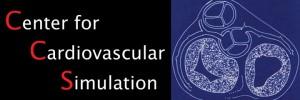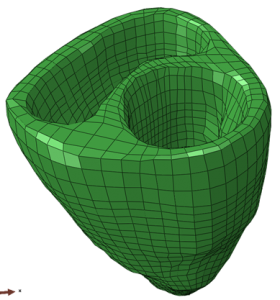The flexibility of 3D printing is, quite literally, a key aspect of the research currently being conducted at the Center for Cardiovascular Simulation (CCS) at the University of Texas, Austin. We are constantly marveling at the many applications for this groundbreaking technology, from macro to micro levels, no less. Now, Dr. Michael Sacks’ CCS  research group is exploring the use of flexible, 3D printed devices that will aid them in treating a range of treatments for cardiovascular disease, particularly when 3D printing is paired with biomechanical computer modeling.
research group is exploring the use of flexible, 3D printed devices that will aid them in treating a range of treatments for cardiovascular disease, particularly when 3D printing is paired with biomechanical computer modeling.
At this stage, the research team is trying to understand the biomechanical function of the cardiovascular system itself, from “the continuum-cellular and micro-fibrous tissue to the entire organ level.” That means they must first have a clearer understanding of the actual mechanical properties of the organic material they are modeling.
How do various tissues that make up the cardiovascular system function? What are their material properties? Since the 1960s, researchers have been utilizing biaxial testing devices to discern how tissue stretches. To put it simply, they stretch tissue in two different directions and measure the results. Typically, the tissue samples have been 10 x 10 cm square or even larger. However, one of the CCS researchers, John Lesicko, has been conducting biaxial testing on mice, so the tissue samples — and the arteries being tested — are obviously much smaller than those from humans.
Enter CAD and 3D printing. Lisicko and the CCS research team are designing a micro-scale biaxial testing device that can manage much smaller samples — as small as 3 mm x 3 mm square! The device is constructed of 200-micron (one thousandth of a millimeter) diameter stainless steel rods, which stretch the tissue from separate attachment points. The rods cannot touch and must work independently of one another in the sense that they are pulling the cardiovascular tissue in two different directions. The attachment elements required holders set at specific points in the tissue to make the the device work properly.
CCS turned to Potomac, a company that specializes in digital and micro fabrication and uses 3D printing. As the process of developing the miniscule device — the rods and the attachment elements — was ongoing, price was a major concern for the researchers. However, 3D printing and refinement via CAD and in the lab has allowed them to keep costs down in a significant way. The ultimate goal is to create a process of patient-specific modeling using computer modeling and 3D printing for, says CCS, “direct manufacturing of personalized medical devices.”
What do you think about this latest nanotechnology application for 3D printing? Let us know in the CCS Nano 3D Printing forum thread at 3DPB.com.
Subscribe to Our Email Newsletter
Stay up-to-date on all the latest news from the 3D printing industry and receive information and offers from third party vendors.
You May Also Like
3D Printing Unpeeled: Wind Turbines, Probiotics and Lenses
TPI Composites, ORNL and Ingersoll Rand are working to make wind turbine tooling segments that can be 18.3 meters long. These elements also include resistive wires that help keep the...
3D Printing Unpeeled: Digital FDM Filament for Functional Gradients
Just published in Nature, a paper by a Seoul National University team looks at “3D printing with a 3D printed digital material filament for programming functional gradients.” Sang-Joon Ahn, Howon...
3D Printing Unpeeled: $5000 Cold Spray 3D Printer, Roland DGA & Living Materials
The AeroForge is a $5000 cold spray metal printer for copper made by a student team at Rice University. In a paper for ACS Central Science a team from Nanjing...
3D Printing Webinar and Event Roundup: April 28, 2024
In this week’s 3D Printing Webinar and Event Roundup, the Ceramics Expo is taking place in Michigan, Stratasys continues its advanced training courses, and SPE is holding a Polymer Characterization...

































